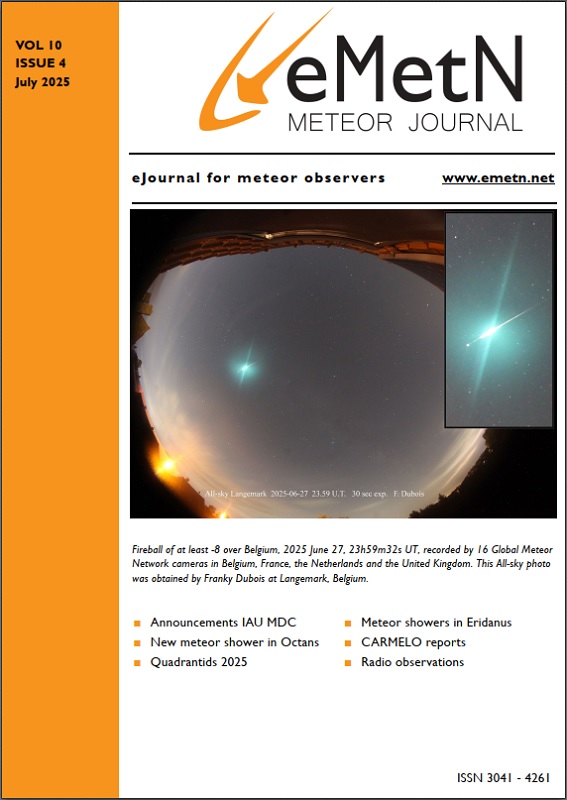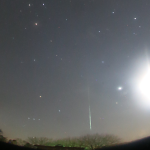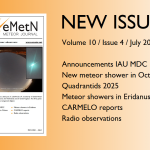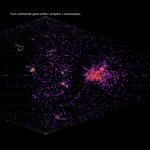Roberto Gorelli points our attention at a recently published meteor related paper.
Identifying Interstellar Objects Trapped in the Solar System through Their Orbital Parameters
This paper has been submitted for publication by Amir Siraj and Abraham Loeb.
Abstract: The first interstellar object, ‘Oumuamua, was discovered in the Solar System by Pan-STARRS in 2017, allowing for a calibration of the abundance of interstellar objects of its size and an estimation of the subset of objects trapped by the Jupiter-Sun system. Photographing or visiting these trapped objects would allow for learning about the conditions in other planetary systems, saving the need to send interstellar probes. Here, we explore the orbital properties of captured interstellar objects in the Solar System using dynamical simulations of the Jupiter-Sun system and initial conditions drawn from the distribution of relative velocities of stars in the Solar neighborhood. We compare the resulting distributions of orbital elements to those of the most similar population of known asteroids, namely Centaurs, to search for a parameter space in which interstellar objects should dominate and therefore be identifiable solely by their orbits. We find that there should be thousands of ‘Oumuamua-size interstellar objects identifiable by Centaur-like orbits at high inclinations, assuming a number density of ‘Oumuamua-size interstellar objects of ∼ 10^15 pc^−3 . We note eight known objects that may be of interstellar origin. Finally, we estimate that LSST will be able to detect several hundreds of these objects.
You can download this paper for free: https://arxiv.org/pdf/1811.09632.pdf (6 pages).
Older meteor library news:
2019
- Meteor Shower Modeling: Past and Future Draconid Outbursts, by A. Egal, P. Wiegert, P. G. Brown, D. E. Moser, M. Campbell-Brown, A. Moorhead, S. Ehlert and N. Moticska. (1 May 2019).
- Meteoroid structure and fragmentation, by M. D. Campbell-Brown. (24 March 2019).
- Solar cycle variation in radar meteor rates, by M. D. Campbell-Brown. (26 February 2019).
- A New Meteoroid Model, by Valeri V. Dikarev, Eberhard Grün, William J. Baggaley, David P. Galligan, Markus Landgraf, Rüdiger Jehn. (12 February 2019).
- Lunar impacts, by Costantino Sigismondi. (12 February 2019).
- Lunar impact flashes, by C. Avdellidou and J. Vaubaillon. (10 February 2019).
- The Geminid parent body: (3200) Phaethon, by Patrick A. Taylor, Edgard G. Rivera-Valentín, Lance A.M. Benner, Sean E. Marshall, Anne K. Virkki, Flaviane C.F. Venditti, Luisa F. Zambrano-Marin, Sriram S. Bhiravarasu, Betzaida Aponte-Hernandez, Carolina Rodriguez Sanchez-Vahamonde and Jon D. Giorgini. (10 February 2019).
- Sun approaching asteroids and meteor streams, by Quanzhi Ye and Mikael Granvik. (10 February 2019).
2018
- Waiting to make an impact: A probable excess of near-Earth asteroids in 2018 LA-like orbits, by C. de la Fuente Marcos and R. de la Fuente Marcos. (18 December 2018).
- What mechanisms dominate the activity of Geminid Parent (3200) Phaethon?, by LiangLiang Yu, Wing-Huen Ip and Tilman Spohn. (6 November 2018).
- The Draconid meteoroid stream 2018: prospects for satellite impact detection, by Auriane Egal, Paul Wiegert, Peter G. Brown, Danielle E. Moser, Althea V. Moorhead and William J. Cooke (21 September 2018).
- Modeling the measurement accuracy of pre-atmosphere velocities of meteoroids, by Denis Vida, Peter G. Brown and Margaret Campbell-Brown (15 July 2018).
2017
- The Mayas and Eta Aquariids in AD 250-909, by J.H. Kinsman and D.J. Asher (31 July 2017).
